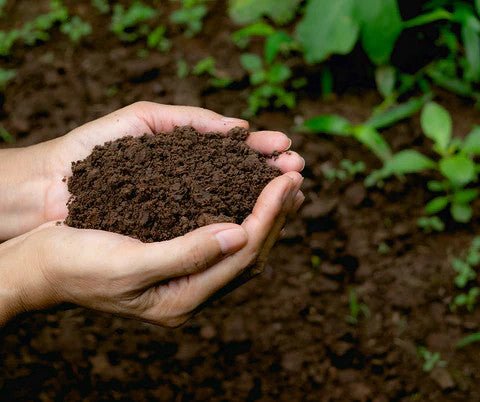
Organically managed land contains beneficial soil microbes that can control soil diseases
Organically cultivated soil hosts a more diverse microbiome than that of conventionally-farmed land, where many farmers treat their crops with synthetic chemicals to fight soil borne diseases. According to a recent, long-term study conducted in India and published in Applied Soil Ecology, these organic microbes are key in plant disease suppression.
In this study, greenhouse plants grown in soil taken directly from long-time organic fields fared better in fending off multiple diseases when compared to those grown in soil taken from conventionally-treated fields, demonstrating the disease-suppressing capabilities of organic soil.
Plant diseases cause significant drops in crop quality and quantity every year globally, especially in areas with food and economic insecurities. While conventional farming practices include the use of fungicides to fight infection of these diseases, these synthetic chemicals negatively affect soil health in many ways including decreasing the overall diversity of their microbial community. Certified organic farms are prohibited from using these synthetic fungicides and must rely more on natural, ecosystem function to help prevent disease.
There is evidence that soil microbiota–the community of bacteria and other microorganisms that live in the soil– may also contribute to the protection of plants from phytopathogens. Organic farmers cannot use harsh chemicals, so they rely on these natural ecological mechanisms to fend off crop disease.
This study presents evidence of the disease suppression in living plants, offered by healthy soil habitat. The soil used in the greenhouse experiment was sourced from plots randomly assigned to be conventionally or organically treated, maintained in New Delhi, India since 2003.
To analyze the soil’s microbiome, microbial ribosomal RNA was extracted and compared to a genome library. Researchers measured disease suppression in live plants by growing wheat seeds in sterile, organic, and conventionally cultivated soil and infecting them with two fungi species that cause diseases in a wide range of crops. Plants were assessed qualitatively by their wilting and yellowing, and quantitatively by measuring stress-specific markers and crop yield.
In both microbiome characterization and observation of infected plants, the organic soil demonstrated the ability to suppress disease. Organic soil contained a far-higher quantity of many beneficial bacteria known to contribute to disease suppression, and hosted significantly more diversity and unique microbes than conventional soil.
Disease severity was far lower for plants grown in organic soil and the infected organic plants grew to be larger than those grown in conventional and sterile soils.
It remains unclear exactly how the microbes provide fungal suppression whether it be through a secreted compound, increased resource competition, or another mechanism. Additionally, this study remains localized in India and it remains to be seen whether organic soils grant higher disease protection in most or all global environments and if these soils host similar microbiomes.
While a large amount of research has demonstrated organic soil to be healthier, this study provides additional evidence that organic farming results in healthier soils, and can provide good, natural disease suppression in lieu of harsh fungicides often relied upon in conventional farming.
content source:

